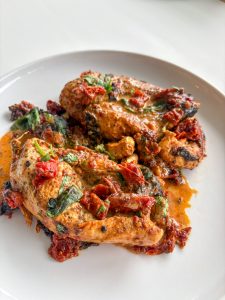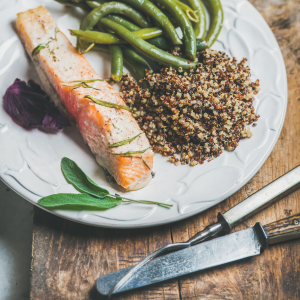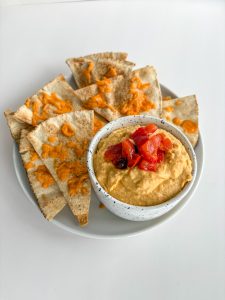A well-balanced diet provides you with essential nutrients that nourish your body and fuel your movement throughout your day. We partnered with Ascensia Diabetes Care, a company dedicated to improving the lives of people living with diabetes and helping empower them to take charge of their health and happiness, for the third year in a row, and with registered dietitian Trista Chan, MHSc to write this blog post and diabetes-friendly miso salmon recipe. Before making any changes to your diabetes treatment regime, consult your health-care provider.
With November being Diabetes Awareness Month, we thought it would be the perfect time to explain how food impacts your blood sugar and to share a movement-fueling, diabetes-friendly recipe. Click or tap here to jump straight to the recipe!
How food affects your blood sugar
When you eat carbohydrate (carb)-containing foods like grains, starches and fruit, your body breaks them down into glucose, which goes into your bloodstream and raises your blood sugar. In response, an organ in your abdomen called the pancreas releases insulin, a hormone that helps your cells use that glucose for energy. Your body needs insulin to fuel your day-to-day activities, from walking/wheeling to breathing.
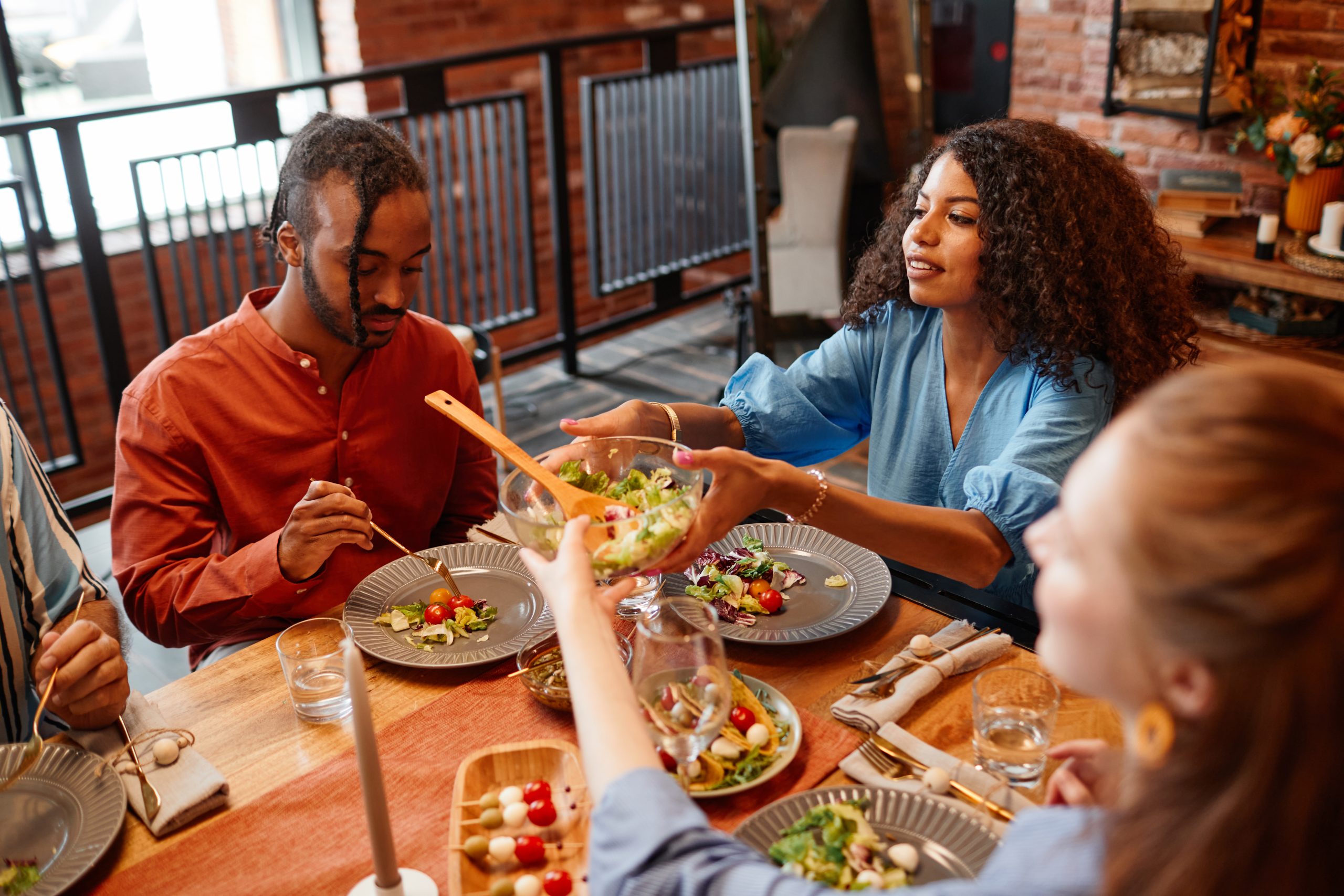
If you have diabetes, your body either can’t make insulin or isn’t able to properly use the insulin it does make. If left untreated, your blood sugar levels rise instead of being used by your body for energy. Over time, too much blood sugar can damage your nerves, blood vessels and organs, leading to many health complications like kidney failure, amputations and blindness.
Just like regular physical activity, what you eat plays a major part in balancing your blood sugar levels. While it’s true that carbs impact your blood sugar, it’s a myth that people with diabetes should avoid foods containing them. The kinds and amounts of carb-containing foods you eat are what matter.
Understanding the glycemic index (GI)
The glycemic index (GI) ranks carb–containing foods by how much and how quickly they raise your blood sugar after you eat them. Foods with high GI scores increase your blood sugar more and faster than those with low GI scores. This can lead to hyperglycemia, a condition where your blood sugar is above 11 mmol/L, which can result in fatigue, thirst and frequent urination (especially at night). There are three GI categories:

1. Low GI (55 or less)
Diabetes Canada recommends choosing foods from this group the most often. Here are some examples of low-GI foods*:
- Quinoa
- Sourdough bread
- Whole grain tortilla
- Steel-cut oats
- Peas
- Sweet potatoes
- Apples
- Berries
- Mangoes
- Oranges
- Peaches
- Pears
2. Medium GI (56 to 69)
Diabetes Canada suggests that you eat foods belonging to this category less frequently. Examples* include:
- Instant oats
- Regular or whole wheat couscous
- Basmati rice
- Corn
- Red, white or cooled potatoes
- Whole grain wheat bread
- Ripe/yellow bananas
- Fresh cherries
- Grapes
- Kiwi
- Pineapple
3. High GI (70 or more)
Diabetes Canada recommends consuming these foods the least often. Here are some examples*:
- Whole wheat bread
- Jasmine and sticky rice
- Instant mashed, red, white or hot potatoes
- Overripe/brown bananas
- Watermelon
You can swap foods in this category with ones in the low and/or medium GI categories.
*Click or tap here for a more complete list of foods.
Some foods such as animal-based proteins, herbs, spices, limes, lemons and many vegetables have so few carbs that they don’t have GI values. This means they have little to no impact on your blood sugar.
In addition to the type of carb-containing food you select, the amount you eat also plays a role in managing your blood sugar. Even low-GI foods must be consumed in a particular amount to prevent a high blood sugar response.
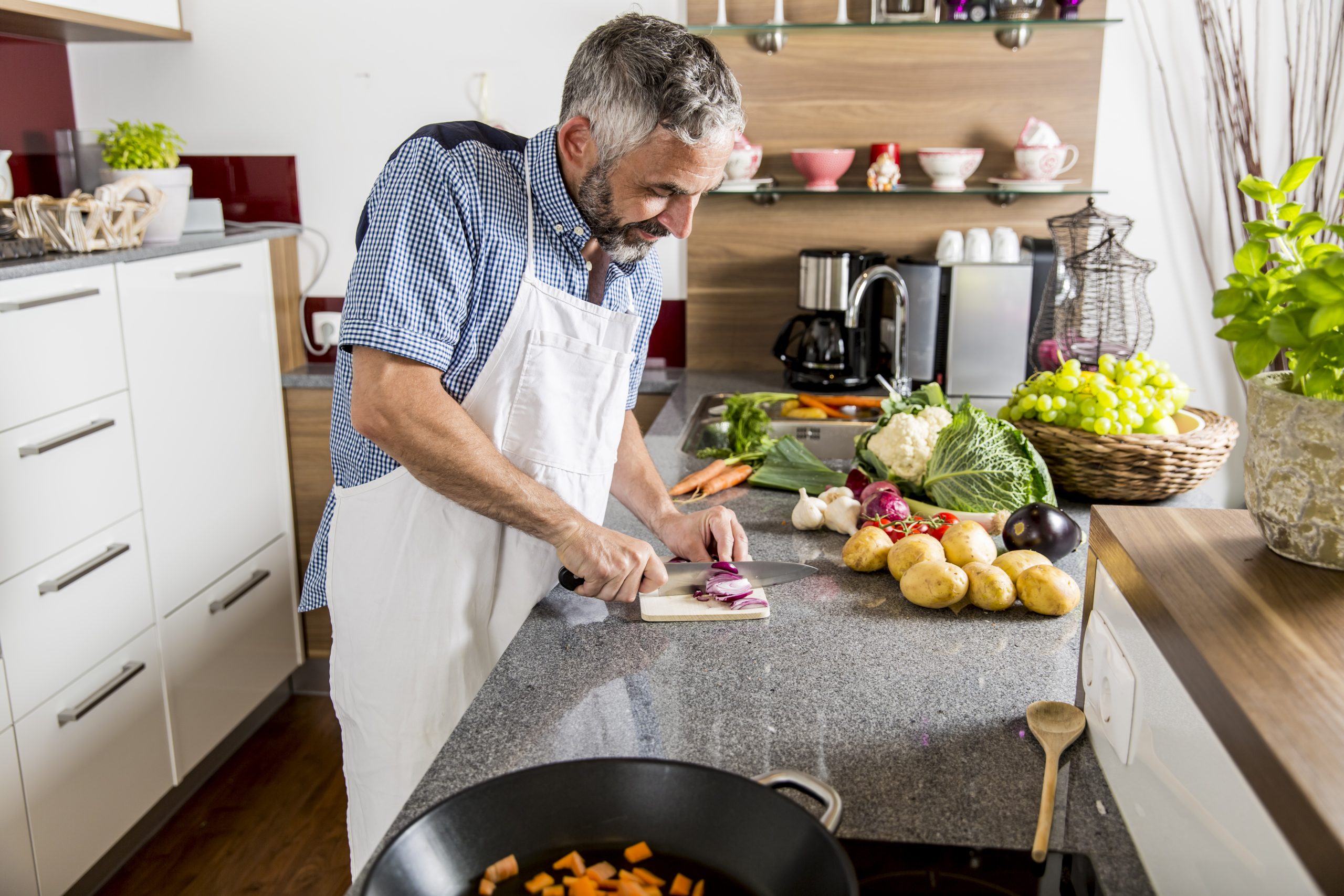
A food’s GI can change depending on the amount of it you consume, how it’s cooked and the other ingredients it’s combined with in a meal or snack. For example, if you pair a high-GI food with non-starchy vegetables, lean protein and healthy fats at each snack or meal, you can lower your overall glycemic response.
Having a low-GI diet can reduce your risk of type 2 diabetes, help you manage your blood sugar, keep you feeling full for longer, and lower your risk of heart disease and stroke. And when managing your blood sugar, having a reliable and accurate blood glucose meter—like one from the CONTOUR®NEXT family—can make a meaningful difference.
Recipe: Miso salmon with cooked greens and quinoa
Now that you have a basic understanding of how food impacts your blood sugar, try this diabetes-friendly recipe brought to you by registered dietitian Trista Chan: miso salmon with cooked greens and quinoa.
Salmon is an excellent source of protein and omega-3 fatty acids. Both play a key role in managing your blood sugar: protein helps slow glucose absorption, preventing blood sugar spikes, while omega-3 fats support a steady release of energy and reduce inflammation. These healthy fats also promote cardiovascular health, which is especially important for people with diabetes, who are at a higher risk of heart disease.
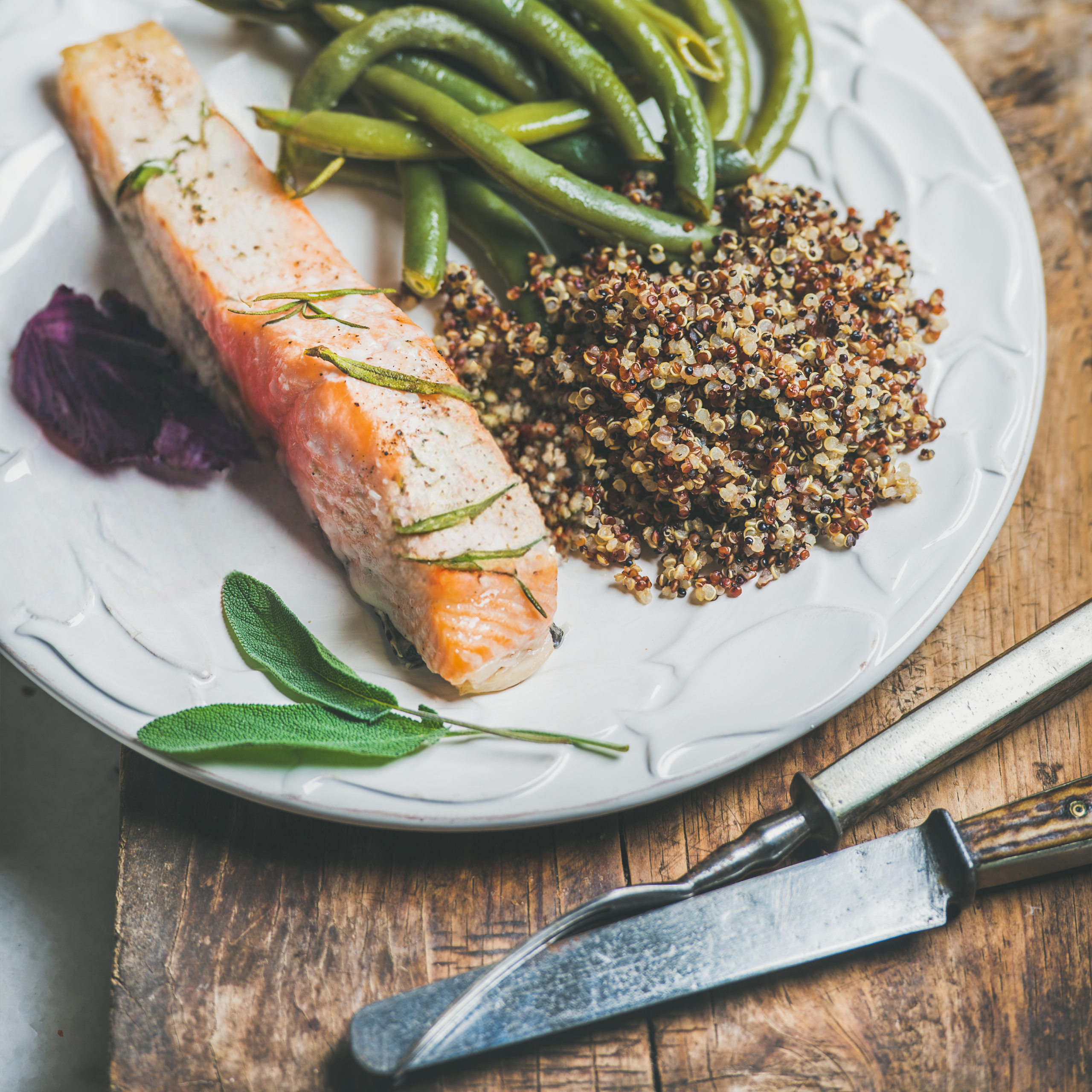
Pairing salmon with fibre-rich greens adds a wealth of antioxidants, vitamins A, C and K, folate, and essential minerals like magnesium and potassium. These nutrients help support blood pressure regulation and overall metabolic health.
Including quinoa provides a low-GI, high-fibre source of energy. Its slow-digesting carbs help maintain stable blood sugar levels and keep up your energy throughout the day.
- Servings: 2
- Prep time: 10 minutes
- Cook time: 20 minutes
- Total time: 30 minutes
Ingredients:
- ½ cup (90 g) of quinoa
- 1 cup (240 ml) of water
- 1 tsp (6 g) of salt
- Two 5 oz (280 g) salmon fillets
- 1 ½ Tbsp (30 g) of miso paste
- 1 Tbsp (15 ml) of rice vinegar
- 2 tsp (5 ml) of sesame oil
- 1 tsp (5 ml) of honey or maple syrup
- 1 tsp (5 ml) of soy sauce

- 2 cups (150 g) of chopped leafy greens (bok choy, Chinese broccoli, kale or cabbage)
- Alternatives: 2 cups (150 g) of broccoli florets, zucchini, green beans or asparagus
- 1 tsp (5 ml) of olive oil
- 1 clove of minced garlic
- 1 tsp (2 g) of chili flakes
- 2 tsp (6 g) of sesame seeds (to garnish)
- 2 tsp (3 g) of sliced green onion (to garnish)
Directions:
- Preheat the oven to 400°F (200°C).
- Rinse the quinoa under cold water. Combine it with the water and salt in a small pot. Bring it to a boil, reduce the heat to low, and cover and simmer for 15 minutes until it’s fluffy. Keep it covered.
- In a small bowl, whisk the miso paste, rice vinegar, sesame oil, honey or maple syrup and soy sauce. Pat the salmon dry and coat it with the marinade (reserve 1 tsp if desired). Let it sit for 10 to 20 minutes while the quinoa cooks.
- Place the salmon on a lined baking sheet and bake it for 10 to 12 minutes until it’s cooked through and flaky.
- Heat the oil in a pan over medium heat. Add the garlic and cook it for 2 to 3 minutes. Add the vegetables. Stir-fry for 3 to 5 minutes (the greens wilt quickly; broccoli/beans/asparagus may take slightly longer). Season with soy sauce.
- Assemble: divide the quinoa between plates. Top it with vegetables and salmon. Garnish with the sesame seeds and green onion.
Disclaimer: The company content was created by a dietitian. Although the company content was created by a nutrition professional, it does not mean that the information contained within the company content has been customized for you individually, nor does it mean that you are in a professional relationship with the company or any individual creator of the company content. Please contact your medical professional prior to making any changes based upon the company content.



